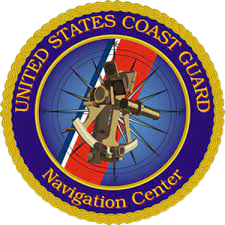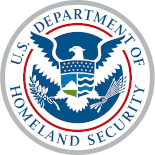The U.S. Coast Guard and other government agencies broadcast different kinds of maritime safety warnings, using a variety of different radio systems to ensure coverage of different ocean areas for which the United States has responsibility, and ensure all ships of every size and nationality can receive this safety information. All broadcasts except those over VHF and MF radiotelephone are made by computer.
United States Coast Guard - National Weather Service Coordination-Liaison Working Group(UNCLOG)
UNCLOG was established by Memorandum of Agreement between the US Coast Guard and National Oceanic and Atmospheric Administration/National Weather Service to cooperate in the dissemination of meteorological forecasts and warnings to mariners, and manage the configuration of NOAA/NWS text and graphic products broadcast to mariners over USCG telecommunications facilities.
UNCLOG also manages the listing of National Weather Service Products Recommended for Broadcast by the USCG, which is the means for ensuring mariners receive the most relevant products over the most appropriate radio service. USCG Communications Command services in this listing include HF Voice Broadcasts (VOBRA), HF simple teletype over radio (SITOR), and NAVTEX. USCG Sector Rescue 21 services include voice broadcasts on channel 1022 (old channel 22A).
National Weather Service Products Recommended for Broadcast by the USCG.
Effective: January 19, 2022
Coastal Maritime Safety Broadcasts
VHF Marine Radio Broadcasts. Urgent marine navigational and weather information is broadcast over VHF channel 1022 (old channel 22A) (157.1 MHZ) from over 200 sites covering the coastal areas of the U.S., including the Great Lakes, major inland waterways, Puerto Rico, Alaska, Hawaii and Guam. Broadcasts are first announced over the distress, safety and calling channel 16 before they are made. All ships in U.S. waters over 20m in length are required to monitor VHF channel 16, and must have radios capable of tuning to the VHF simplex channel 1022.
NOAA Weather Radio (NWR) is a nationwide network of radio stations broadcasting continuous weather information direct from a nearby National Weather Service office. NWR broadcasts National Weather Service warnings, watches, forecasts and other hazard information 24 hours a day. In addition, you may visit the NOAA/NWS Marine Product Dissemination Information web page (USCG broadcast schedules for VHF, MF, HF, NAVTEX, and HF NBDP (radio telex) are included here) or obtain NGA Broadcast Warnings.
NAVTEX text broadcasts on 518 kHz recognized by the GMDSS cover most coastal areas of the U.S.
High Seas Broadcasts
Worldwide Navigational and Meteorological safety broadcasts are organized by NAVAREAS and METAREAs.
Weather forecasts and warnings are broadcast over scheduled HF radiotelephone channels from Coast Guard Communication Stations using a very distinctive and recognizable computer-synthesized voice.
For information concerning other U.S. and international marine radiofacsimile broadcasts, see HF-Fax Schedules.
Marine Radiofacsimile Policy: The Coast Guard, which broadcasts radio facsimile information from five Communications Stations, will continue these broadcasts to meet the needs of its cutters, and to meet public safety needs as described in Chapter V of the Safety of Life at Sea Convention, unless otherwise directed.
HF Radiotelex (HF SITOR). Weather, NAVAREA and other navigational safety text information, recognized by the GMDSS, are broadcast over scheduled GMDSS HF narrow-band direct printing channels from Coast Guard Communications Stations.
Inmarsat-C SafetyNET and Iridium SafetyCast Worldwide weather, navigational, ice and search and rescue text information, recognized by GMDSS, are broadcast over satellite.
Marine Product Dissemination Information
The U.S. National Weather Service has a new World Wide Web page listing sources and schedules for receiving marine meteorological information by a variety of means, including Internet, radio, satellite, computer bulletin board, and others.
Meteorological Observations
Even with satellites, meteorologists cannot accurately prepare marine weather forecasts without accurate ship weather reports. For this reason, the National Weather Service sponsors the United States Voluntary Observing Ship Program (VOS). Ships participating in the VOS program provide meteorological and oceanographic reports while at sea. These observations form the basis of marine weather forecasts in coastal and high seas areas. For more information, see the NWS Port Meteorological Officers and Voluntary Observing Ship Program Page.
“NOTE: U.S. two-digit channel numbers previously ending in “A” are now designated by the same two-digit number, preceded by the digits “10”, in accordance with international practice.”

